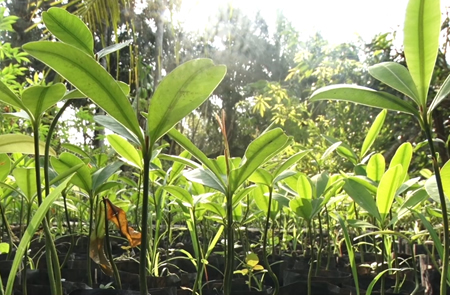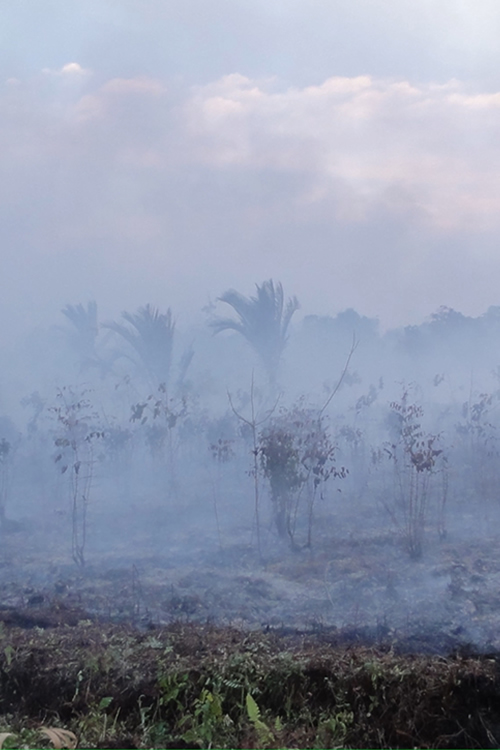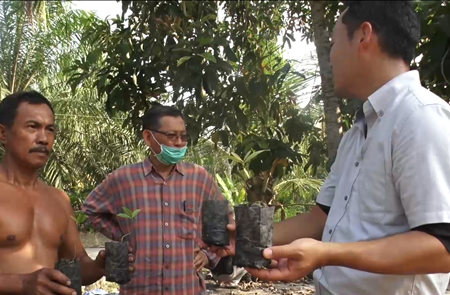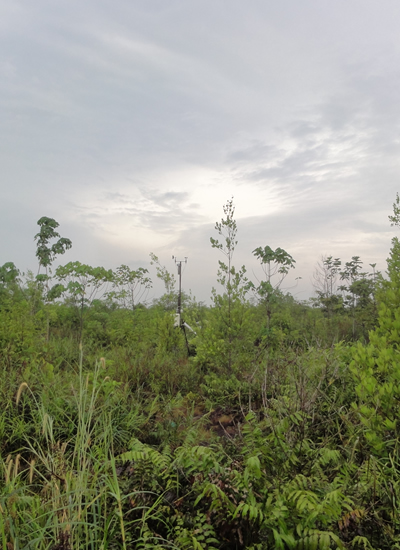We have subtitles in multiple languages (Thai, Indonesia, Filipino, Vietnam)
Play YouTube, select subtitles from settings (gear icon)
In Indonesia, fires caused by the development of peatlands are becoming a problem. This video introduces research activities carried out by CSEAS in cooperation with local communities to address this problem.
In the Southeast Asian countries of Singapore, Malaysia, and Indonesia, serious air pollution due to smoke occurs every year. The cause is the rapid development of oil palm and acacia plantations in tropical peatland regions such as the islands of Sumatra and Kalimantan. As plantations are developed, peatlands dry out, leading to large-scale fires and smoke pollution. Fires emit greenhouse gases, considered to be a cause of global warming. This phenomenon is becoming a serious global environmental issue. Working with members of local communities and using natural science research as our tool, we seek to find solutions to this problem.
Peatlands are deposits of not-yet decomposed plant residue that have accumulated in a wetland environment for over several hundred years. In Japan, Kushiro Marsh in Hokkaido is a well-known example. Tropical peatlands are most widely distributed in Indonesia. It is estimated that about half of Riau Province, on the island of Sumatra—about four million hectares—is composed of peatlands. This is a greater surface area than Kyushu (total of 3.6 million hectares). Because tropical peatlands are wetlands, they are not suitable for human habitation development. However, since the 1970s, it has been possible to develop these lands for plantations by using heavy machinery.
When peatlands are drained for development, they become dry and decompose. As a result, a great amount of carbon is emitted, causing global warming. Furthermore, as the development of peatlands accelerates in recent years, large-scale fires break out every year during the dry season. The smoke pollution caused by these fires is called “haze.” It contains harmful substances such as carbon monoxide, sulfur dioxide, nitrogen dioxide, and fine inhalable particulate matter (PM2.5). The number of people whose health has been harmed by breathing in these substances is rapidly growing.
Peatland fires are troublesome because not only are peatlands easily combustible, it is difficult to extinguish the fires because they extend deep underground. Thus, since 2012, we have been working with people from local communities and exploring the possibility of conserving the ecological environment by rewetting peatlands and afforesting with native species. The area we are working in is Tanjung Ruban Village in Riau Province. This village has peatland areas that have been abandoned after fires. Together with villagers, we have rewetted five hectares of the abandoned areas to serve as a test bed for afforestation. We have built weirs and planted native species and are also continuing to measure water levels and plant growth. In re-wetted peatland areas, instead of planting oil palms and acacia, which require drainage, we are planting Calophyllum inophyllum (Tamanu), Gonystylus bancanus (Ramin), and Shorea (Meranti), which are native specifies that can grow even in wetlands. After weirs were built, the groundwater level increased to 40 centimeters below the surface. This value of minus 40 centimeters is the standard value stipulated legally by the Indonesian government in 2014 for preventing the drying of peatlands. Thus it can be said that our efforts have special significance for the regeneration of peatlands in Indonesia.








Introduction Of Literature For Those Who Wish To Learn More
(1) Iriana W., Tonokura K., Inoue G., Kawasaki M., Kozan O., Fujimoto K., Ohashi M., Morino I., Someya Y., Imasu R., Rahman MA., Gunawan D. “Ground-based measurements of column-averaged carbon dioxide molar mixing ratios in a peatland fire-prone area of Central Kalimantan, Indonesia”. Scientific Reports volume 8, Article number 8437 (2018)
https://www.nature.com/articles/s41598-018-26477-3 (Web)
(2) Kozan O. “Rainfall and Groundwater Level Fluctuations in the Peat Swamps (Chapter10)”, Catastrophe and Regeneration in Indonesia’s Peatlands Ecology, Economy and Society, NUS Press, 296-311 (2016)
http://www.kyoto-up.or.jp/book.php?id=2075 (Kyoto University Press)

